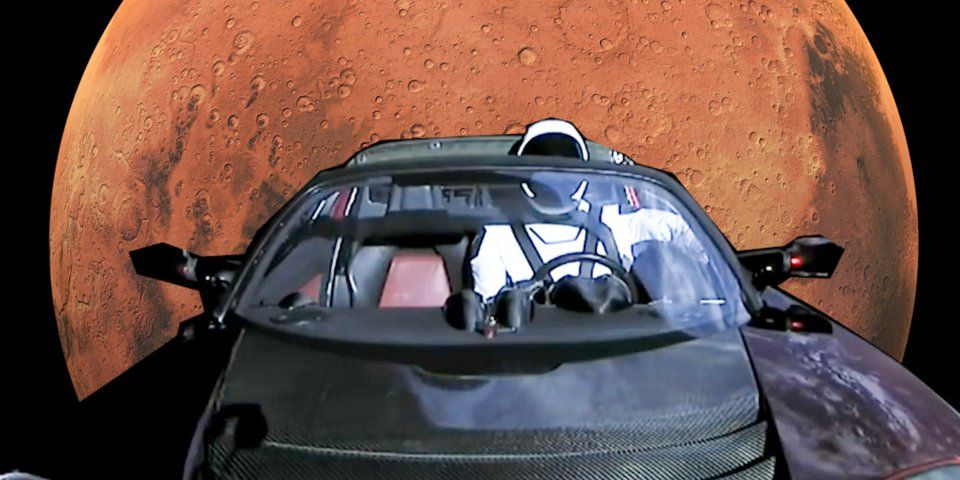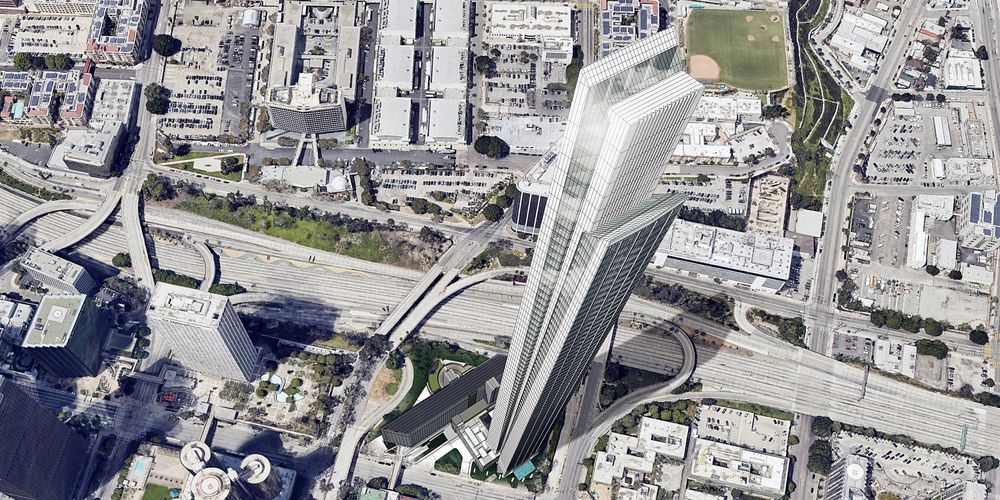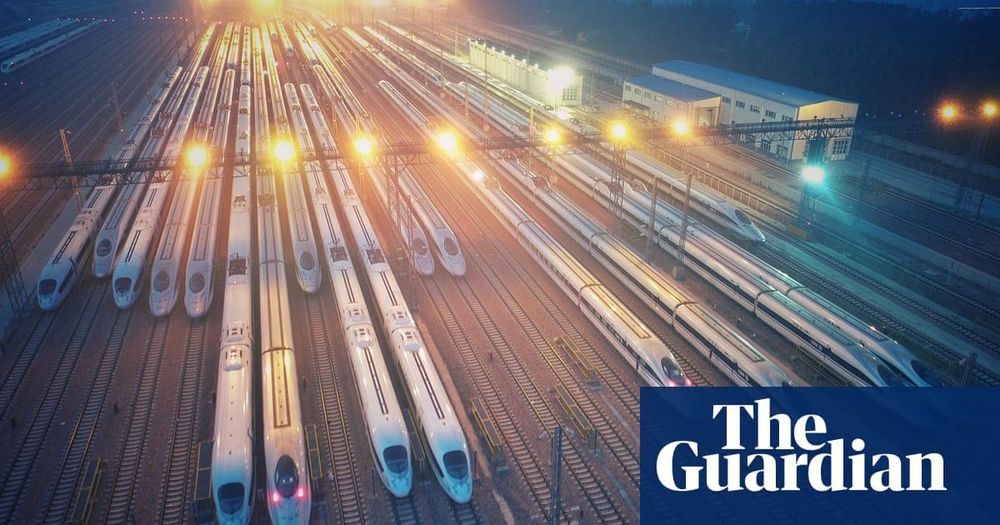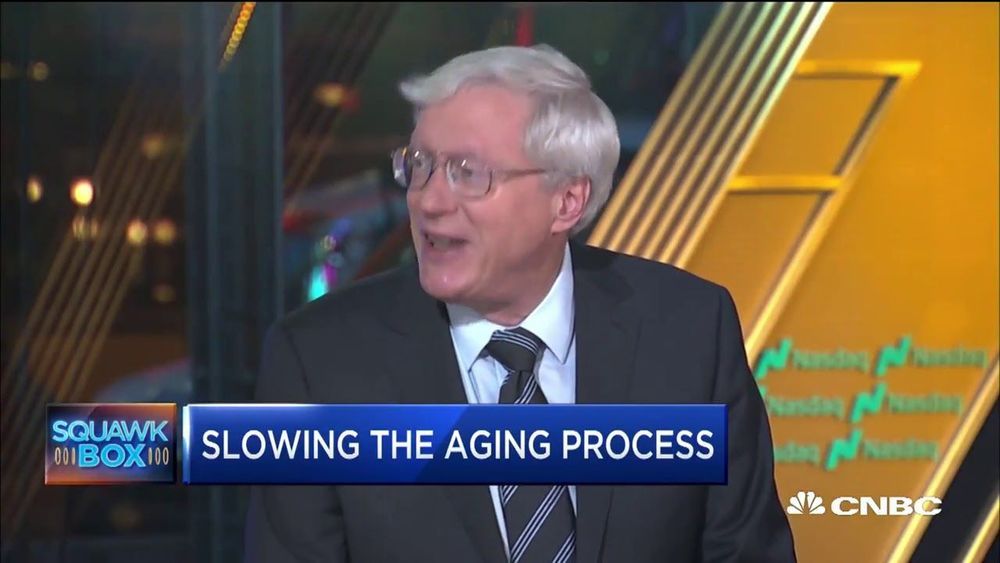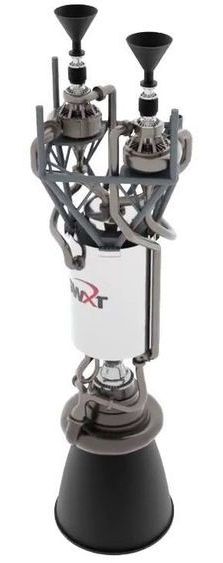Fans like Ben Pearson use NASA data to project the car’s location through space. For now, the convertible will continue its long drive around our inner solar system. And perhaps if humans make it to Mars like Musk hopes, we might even see the Roadster on our way there.
The human eye is an exquisite photodetection system with the ability to detect single photons. The process of vision is initiated by single-photon absorption in the molecule retinal, triggering a cascade of complex chemical processes that eventually lead to the generation of an electrical impulse. Here, we analyze the single-photon detection prospects for an architecture inspired by the human eye: field-effect transistors employing carbon nanotubes functionalized with chromophores. We employ non-equilibrium quantum transport simulations of realistic devices to reveal device response upon absorption of a single photon. We establish the parameters that determine the strength of the response such as the magnitude and orientation of molecular dipole(s), as well as the arrangements of chromophores on carbon nanotubes. Moreover, we show that functionalization of a single nanotube with multiple chromophores allows for number resolution, whereby the number of photons in an incoming light packet can be determined. Finally, we assess the performance prospects by calculating the dark count rate, and we identify the most promising architectures and regimes of operation.
Nuclear fission — the physical process by which very large atoms like uranium split into pairs of smaller atoms — is what makes nuclear bombs and nuclear power plants possible. But for many years, physicists believed it energetically impossible for atoms as large as uranium (atomic mass = 235 or 238) to be split into two.
That all changed on Feb. 11, 1939, with a letter to the editor of Nature — a premier international scientific journal — that described exactly how such a thing could occur and even named it fission. In that letter, physicist Lise Meitner, with the assistance of her young nephew Otto Frisch, provided a physical explanation of how nuclear fission could happen.
It was a massive leap forward in nuclear physics, but today Lise Meitner remains obscure and largely forgotten. She was excluded from the victory celebration because she was a Jewish woman. Her story is a sad one.
- Los Angeles could be getting a brand-new skyscraper that’s taller than the Wilshire Grand — the tallest tower in California.
- The planned skyscraper is 77 stories high and features a mixture of condos, hotel rooms, and commercial space.
- The future development represents a growing trend of supertall construction as cities compete to have the most impressive skylines.
Los Angeles has endured endless criticism for its low-lying slab buildings, flat-topped towers, and mismatched design aesthetics.
In 2013, the former architecture critic at Los Angeles magazine, Greg Goldin, lamented the city’s “dull” and “mediocre” landscape.
Introduction to Machine Learning
Posted in robotics/AI
Products Machine Learning Crash Course Courses Crash Course Introduction to Machine Learning This module introduces Machine Learning (ML). Estimated Time: 3 minutesLearning Objectives Recognize the practical benefits of mastering machine learning Understand the philosophy behind machine learning Int…
CNBC — Combating Aging
Posted in life extension
A portion of NASA’s $21.5 billion 2019 budget is for developing advanced space power and propulsion technology. NASA will spend $176 to $217 million on maturing new technology. There are projects that NASA has already been working on and others that NASA will start and try to complete. There will be propulsion, robotics, materials and other capabilities. Space technology received $926.9 million in NASA’s 2019 budget.
NASA’s space technology projects look interesting but ten times more resources devoted to advancing technological capability if the NASA budget and priorities were changed.
NASA is only spending 1 of its budget on advanced space power and propulsion technology. NASA will spend $3.5 billion in 2019 on the Space Launch System and Orion capsule. SLS will be a heavy rocket which will start off at around the SpaceX Heavy capacity and then get about the SpaceX Super Heavy Starship in payload capacity. However, the SLS will cost about $1 billion to launch each time which is about ten times more than SpaceX costs. NASA is looking at a 2021–2022 first launch and then a 2024 second launch. This would be $19+ billion from 2019–2024 to get two heavy launches and this is if there are no delays.
